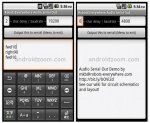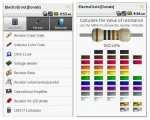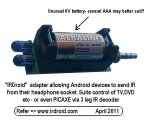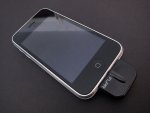I thought I'd throw this around for discussion...
I would like to have some sort of interface to an iDevice (iPhone/iPad). Something like a bluetooth serial interface... i.e. microcontroller <-> Serial to Bluetooth or WiFi Converter <-> iPhone.
This is just a pie in the sky idea (unless someone has developed this already). At the iPhone end have a sort of sandbox creator program to make an interface screen with meters, pushbuttons, pots, etc to which serial commands could be attached. The microcontroller could be anything (Picaxe, Arduino, etc). I'm saying wireless, because that *seems* to be easiest and removes the electrical foul ups.
You could create some great (dare I say - trendy) interfaces for projects that anyone could access. Our school is already using iPads, so this could be a great educational tool as well. Having a group, even, contributing and controlling.
Almost tempted to have a go myself except for the knowledge stall at the iDevice end.
Probably wacky for sure, but I can't see why it's not doable!
Just an idea...
I would like to have some sort of interface to an iDevice (iPhone/iPad). Something like a bluetooth serial interface... i.e. microcontroller <-> Serial to Bluetooth or WiFi Converter <-> iPhone.
This is just a pie in the sky idea (unless someone has developed this already). At the iPhone end have a sort of sandbox creator program to make an interface screen with meters, pushbuttons, pots, etc to which serial commands could be attached. The microcontroller could be anything (Picaxe, Arduino, etc). I'm saying wireless, because that *seems* to be easiest and removes the electrical foul ups.
You could create some great (dare I say - trendy) interfaces for projects that anyone could access. Our school is already using iPads, so this could be a great educational tool as well. Having a group, even, contributing and controlling.
Almost tempted to have a go myself except for the knowledge stall at the iDevice end.
Probably wacky for sure, but I can't see why it's not doable!
Just an idea...








